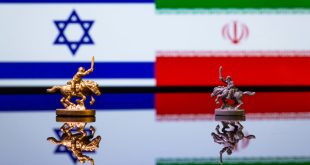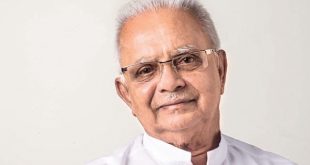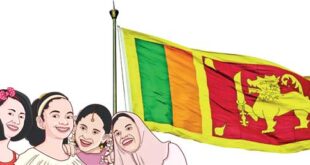Remember the Non-Aligned Movement (NAM)? Like a comet which zooms in the distant sky and makes periodic appearances, the Non-Aligned Movement summit surfaces once in three years — and then, virtually, disappears.
There was little media hype over the 15th NAM summit held at the Egyptian resort town of Sharm el-Sheikh on Wednesday and yesterday. Whatever the media attention that the summit venue attracted was not so much on the vision and the mission of the NAM but on sideline meetings between leaders of the developing countries. Indian Prime Minister Manmohan Singh’s meeting with his Pakistani counterpart Yusuf Raza Gilani was one such meeting.
But the last NAM summit held in September 2006 in the Cuban capital of Havana drew unusual media attention. It was not because the NAM had suddenly rediscovered its relevance in the post-Cold War era, but because the summit saw for the first time a meeting of likeminded Third World leaders who displayed the courage to take the seemingly almighty Bush by the collar. Among them were Iranian president Mahmood Ahmadinejad and Venezuelan President Hugo Chavez.
The 2006 summit was held days before the United Nations General Assembly sessions. The timing together with the venue — a country which is politically opposed to the United States – and Cuban leader Fidel Castro’s ill health made the summit a worth covering event for the Western media. Besides, it was at the Havana summit, the NAM’s voice against the US hegemony was heard for the first time since the Cold War ended in 1991. While countries like Iran, Venezuela and Cuba were vociferous in their opposition to US hegemonic designs, NAM countries which have become US allies after the Cold War were silent, probably in deference to the host country’s anti-US political ideology.
It was also the first time that Raul Castro, who was later installed as Fidel Castro’s successor, addressed an international gathering.
 Almost all the leaders made a beeline for the UN General Assembly’s annual sessions which began a few days later in New York. Emboldened by the new life the NAM got in Havana, most Third World leaders shook the UN. The speech President Chavez made at the UN made world headlines. “The devil was here last night,” he said referring to the then US president George W. Bush who addressed the UNGA a day before. “He was here. The place is still stinking,” Chavez said.
Almost all the leaders made a beeline for the UN General Assembly’s annual sessions which began a few days later in New York. Emboldened by the new life the NAM got in Havana, most Third World leaders shook the UN. The speech President Chavez made at the UN made world headlines. “The devil was here last night,” he said referring to the then US president George W. Bush who addressed the UNGA a day before. “He was here. The place is still stinking,” Chavez said.
But as days passed by, whatever the NAM achieved in Havana in terms of Third World unity disappeared. Since Havana, NAM had not made much ‘big’ news. This week’s Sharm el-Sheikh summit hardly made news on Western TV channels or newspapers, underscoring the NAM’s lack of political clout.
During the cold war days, the NAM’s relevance was felt. It was taken seriously by both power blocs – the Western bloc led by the United States and the Eastern bloc led by the Soviet Union. The unity the NAM displayed then was its power, with which it had blocked many an attempt by big powers to dominate the globe, usurp the resources of the developing countries and checked neo-colonialism.
Be it talks on international trade, fair prices for the products of developing countries, the special drawing rights offered by the International Monetary Fund or the question of sharing ocean resources of the international waters, there was Third World solidarity.
Even on the question of international law, the newly independent countries held the view that international treaties should be reviewed and readopted because the NAM countries had played little or no role in the negotiation processes of the treaties that had come into existence before they emerged as independent states.
Though the East bloc was more accommodative of the NAM, the West saw it as a Soviet proxy. Whatever it was, the NAM was a power to be reckoned with then.
But today, it’s a different story. Unity appears to be a rare commodity within the movement. The member-states themselves are responsible for the NAM’s sorry status. NAM members pull in different directions at many forums, refusing to take a common stand on many a global issue. What determines a member-state’s position is its national interest – not the Third World unity.
It’s true that NAM lost its political clout with the collapse of the Cold War, but it could still have played a powerful role as an economic bloc. But it failed to rise as the economic voice of the voiceless billions who live in NAM nations.
After the collapse of the bipolar world in the early 1990s, it was hoped that the G-77, a group comprising developing countries, would supplement the NAM. Alas! Instead, NAM member-states joined a multiple of groupings, some of which included big powers.
One-time NAM champions have become best friends of the sole superpower. Some of them were once in the forefront of the NAM’s campaign against colonialism, imperialisms and apartheid. They have now either aligned themselves with a superpower – in today’s context the sole superpower – or are scrambling to surrender their sovereignty on the altar of neo-colonialism.
Take for instance, India whose first prime minister, Jawaharlal Nehru coined the word non-alignment. It is today aspiring to be counted among the big powers. India’s presence at the G-8 summit of the industrialized nations has become institutionalized. Some analysts say that the G-8 is now G-14, which includes countries like India, Brazil, China and South Africa. India is also a member of the BRIC – which brings together Brazil, Russia, India and China. Then there is a grouping called G22, which brings together the G8 group of developed nations with 14 developing nations. Then there is G-15 which is exclusively made up of developing countries but meets on the sideline of the NAM summit.
In contrast, during the heydays of the NAM, member-states stood together for a cause even though they knew such a stance would be disadvantageous to them.
Strictly speaking, the Non-Aligned Movement which emerged as strong third bloc during the Cold War era, appears to have outlived its usefulness and is today struggling to find a new reason for its existence.
Such disintegration of the NAM spirit has facilitated the West-led globalization process which gobbles up the developing countries’ resources lock, stock and barrel. Neo-colonialism and big business rule the roost.
NAM disunity has helped the big powers politically too. When the US invaded Iraq, a NAM member which once hosted a summit, some NAM members joined the aggressor, some kept silent. Only a few opposed.
Developing nations, as a single country, cannot confront issues such as globalization. They must unite and offer a combined fight. The term non-alignment may not be relevant today in a unipolar world, but the need for solidarity among developing countries is as strong as it was when the Bandung conference, the precursor to NAM, was held in 1955.
 Sri lanka Muslims Web Portal Diversity and Inclusiveness
Sri lanka Muslims Web Portal Diversity and Inclusiveness



